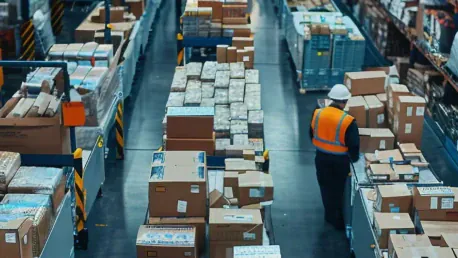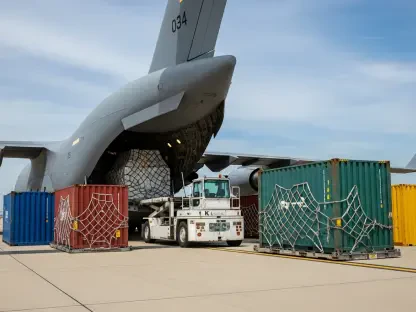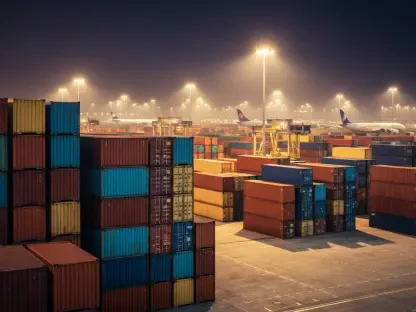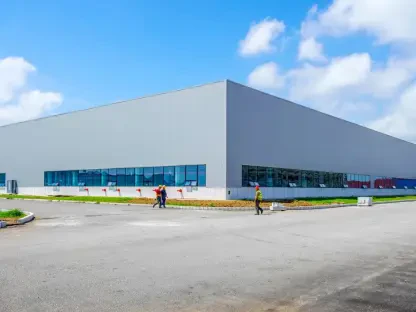The logistics and warehousing sector is experiencing a groundbreaking transformation through the integration of various cutting-edge technologies. This evolution is driven by the need to address efficiency bottlenecks and labor shortages. By enabling fully automated, “lights-out” warehouses, these technologies are setting new standards in operational precision, adaptability, and cost efficiency. As companies strive to enhance productivity and reduce costs, the adoption of these advanced systems is increasingly seen as a strategic imperative. The integration of Automated Warehouse Management Systems, Autonomous Mobile Robots, and other technologies signals a future where human intervention is minimal, and efficiency is maximized. This vision is not just a futuristic fantasy but a rapidly approaching reality that could redefine the entire logistics landscape.
The Foundation: Automated Warehouse Management Systems (WMS)
Central to the automation journey, Automated Warehouse Management Systems (WMS) function as essential data repositories. With 84% of third-party logistics providers adopting WMS by 2021, the software integrates inventory levels, fleet information, logistics routes, and operational performance metrics into a cohesive system. This integration streamlines various facets of warehouse management, making it easier for companies to optimize their operations. WMS acts as a centralized hub for all warehouse-related data, ensuring seamless coordination with automated equipment and reducing operational errors.
This unified data platform ensures seamless coordination with automated equipment, reducing operational errors and enhancing consistency. Additionally, the insights provided by WMS enable the fine-tuning of automated processes, ensuring that performance metrics are continually optimized for maximum efficiency. By serving as a single source of truth, WMS allows for real-time monitoring and decision-making, enhancing the overall agility and responsiveness of warehouse operations. The continuous feedback loop created by WMS also aids in the proactive identification of potential issues, making maintenance and upgrades more efficient and effective.
Streamlining Operations: Automated Storage and Retrieval Systems (AS/RS)
Automated Storage and Retrieval Systems (AS/RS) revolutionize the picking process, which traditionally occupies as much as half of a warehouse worker’s time. With the integration of IoT sensors and connectivity to WMS, AS/RS offers unprecedented picking accuracy and efficiency. These systems automate the movement of goods within the warehouse, significantly reducing the labor-intensive task of manual picking. By leveraging advanced sensors and robotics, AS/RS can quickly and accurately retrieve items from storage, streamlining the entire process and minimizing human error.
Recent advancements have compacted AS/RS, making them viable for smaller facilities and enabling safer high-shelf operations. By drastically reducing the time wasted in manual picking, AS/RS transform the workflow, freeing up human workers for more complex tasks and enhancing overall productivity. The adoption of AS/RS also allows for better space utilization, as these systems can operate in tight spaces and reach heights that would be challenging for human workers. This increased efficiency in space management contributes to a more organized and efficient warehouse environment, ultimately leading to cost savings and higher throughput.
Flexibility in Movement: Autonomous Mobile Robots (AMRs)
Unlike Automatic Guided Vehicles (AGVs), Autonomous Mobile Robots (AMRs) use advanced sensor arrays, including laser guidance systems and GPS, to navigate independently. This real-time adaptability allows AMRs to handle dynamic warehouse environments more effectively. Equipped with machine learning capabilities, AMRs can recognize objects, autonomously route themselves, and make quick, data-driven decisions. This technology reduces the need for static pathways and offers significant gains in efficiency by consistently finding the fastest routes and adapting to changing layouts.
Equipped with machine learning capabilities, AMRs can recognize objects, autonomously route themselves, and make quick, data-driven decisions. This technology reduces the need for static pathways and offers significant gains in efficiency by consistently finding the fastest routes and adapting to changing layouts. The adaptability of AMRs makes them particularly valuable in warehouses with fluctuating inventory or frequently changing layouts. By continuously learning from their environment, these robots can optimize their performance, leading to faster and more accurate material handling.
Automation at the Dock: Truck-Loading Robots
Truck-loading robots automate one of the most physically demanding tasks—loading and unloading shipments. From conveyor belt systems to dual-armed robots, these technologies can efficiently pack and unpack boxes, significantly reducing physical strain on workers. By integrating AI, these robots optimize package layout to minimize space wastage, cutting down transportation costs and emissions. With companies like FedEx pioneering these systems, the loading process becomes faster and more accurate, contributing to a streamlined supply chain.
Recent advancements in AI have further enhanced the capabilities of truck-loading robots, allowing them to perform complex tasks with greater precision. By analyzing the dimensions and weight of packages, these robots can strategically arrange items to maximize space utilization and stability during transit. This not only reduces the number of trips required but also minimizes the risk of damage to goods. As the technology continues to evolve, truck-loading robots are expected to become an essential component of fully automated warehouses, driving significant improvements in efficiency and cost savings.
On the Road: Autonomous Vehicles
The advancement of autonomous vehicles, particularly at Level 4, is transforming logistics. Though not yet widespread, these self-driving trucks are operational in some areas, demonstrating significant potential for reducing driver shortages and optimizing long-haul routes. Autonomous vehicles generate extensive data that enhance AI models, leading to safer and more efficient operations. Given the predictability of highway driving, logistics might see the earliest widespread adoption of this technology, complementing the automation within warehouses.
The integration of autonomous vehicles into the logistics chain represents a significant leap towards end-to-end automation. By minimizing the need for human drivers, companies can reduce labor costs, improve safety, and ensure more consistent delivery times. Additionally, the data generated by these vehicles can be used to optimize routes, monitor vehicle health, and predict maintenance needs, further enhancing operational efficiency. As regulatory frameworks and technological advancements continue to evolve, the adoption of autonomous vehicles is expected to accelerate, revolutionizing the transportation aspect of the supply chain.
Enhancing Real-Time Capabilities: Edge Computing
Edge computing distributes processing power across local devices rather than centralized cloud servers, reducing latency by up to 30%. This decrease in latency is vital for the effectiveness of automation systems such as AMRs and AS/RS, ensuring rapid and accurate responses. By enabling real-time data processing and decision-making capabilities, edge computing supports the precision required in fully automated warehouse environments. This technology bridges the gap between data collection and actionable insights, enhancing the performance and reliability of automated operations.
By processing data closer to the source, edge computing minimizes the time required for data transmission and analysis, resulting in faster and more reliable system responses. This is particularly important for mission-critical applications where delays can lead to significant inefficiencies or errors. In addition to improving response times, edge computing also enhances data security by reducing the amount of sensitive information transmitted over the network. As the demand for real-time data processing continues to grow, edge computing is poised to play a crucial role in the future of warehouse automation.
Proactive Upkeep: Predictive Maintenance (PdM)
Automated Storage and Retrieval Systems (AS/RS) are transforming how warehouses handle the picking process, a task that can consume up to half of a worker’s time. Utilizing IoT sensors and connecting directly to Warehouse Management Systems (WMS), AS/RS achieve remarkable accuracy and efficiency in picking tasks. These systems automate the internal movement of goods, drastically cutting down the labor needed for manual picking. Advanced sensors and robotics enable AS/RS to retrieve items swiftly and accurately from storage, optimizing the entire workflow while minimizing human errors.
Recent technological advancements have made AS/RS more compact, making them suitable even for smaller facilities and safer for high-shelf operations. By significantly reducing manual picking time, AS/RS enhance workflow efficiency, liberate workers for more complex tasks, and boost overall productivity. Additionally, these systems offer improved space utilization, operating effectively in tight spaces and reaching heights difficult for human workers. This leads to a more organized and efficient warehouse, resulting in cost savings and higher throughput.









